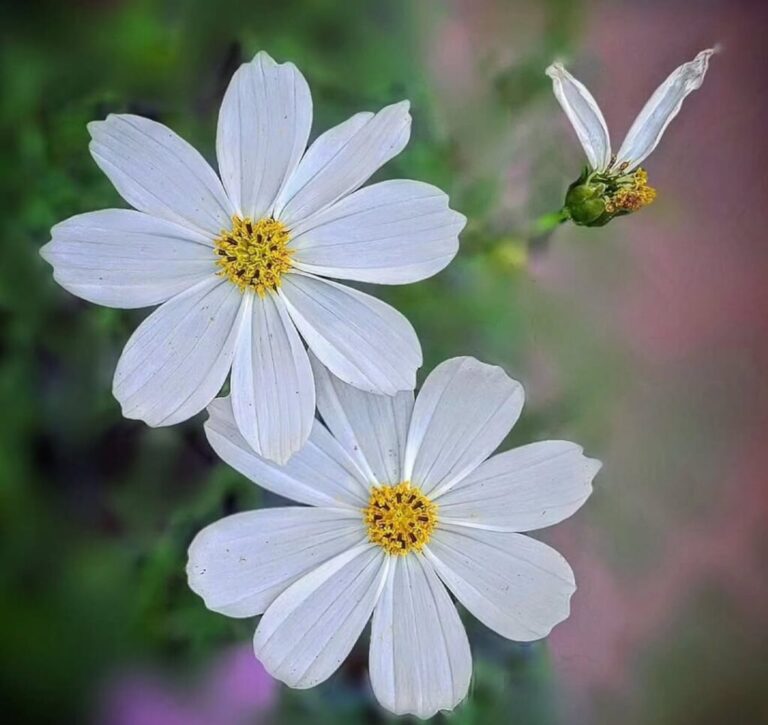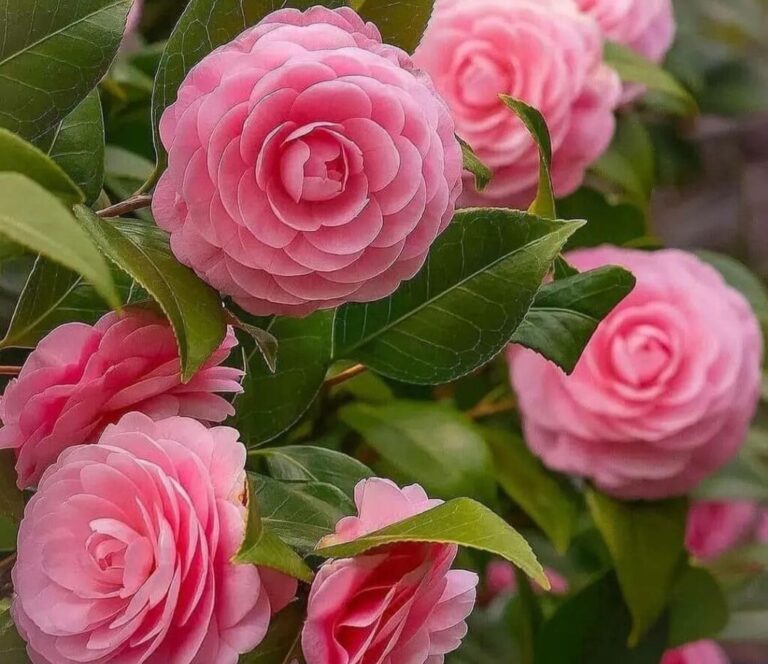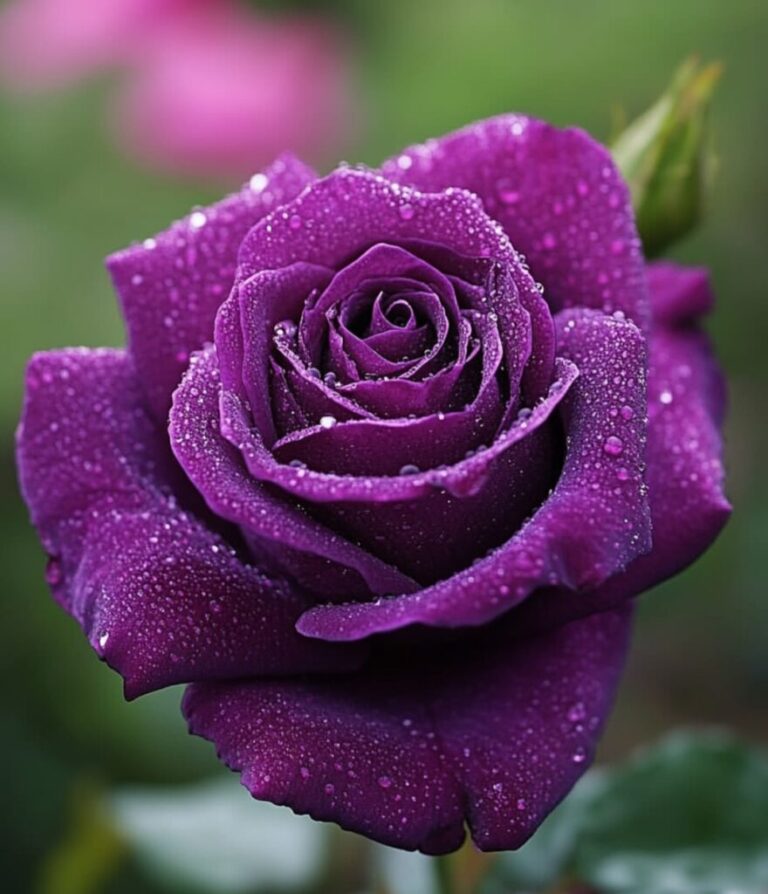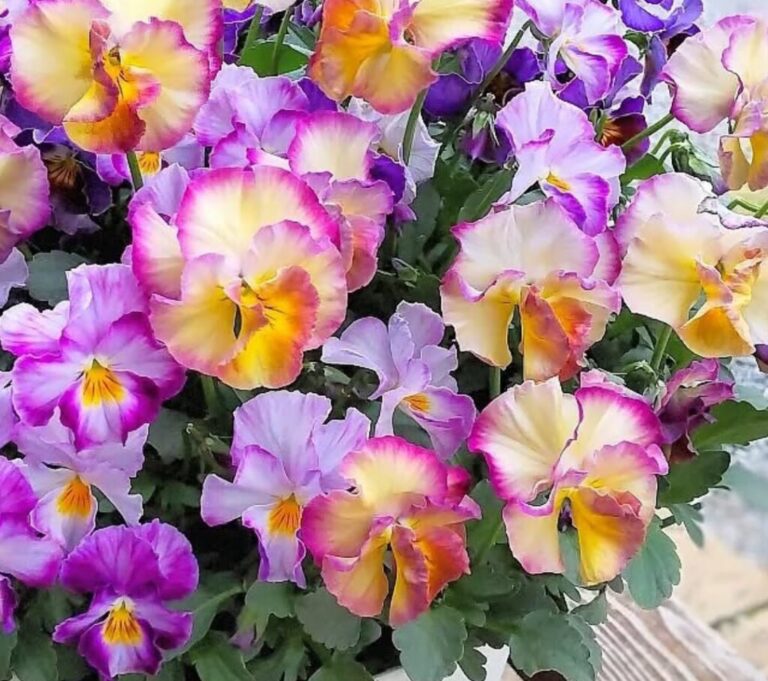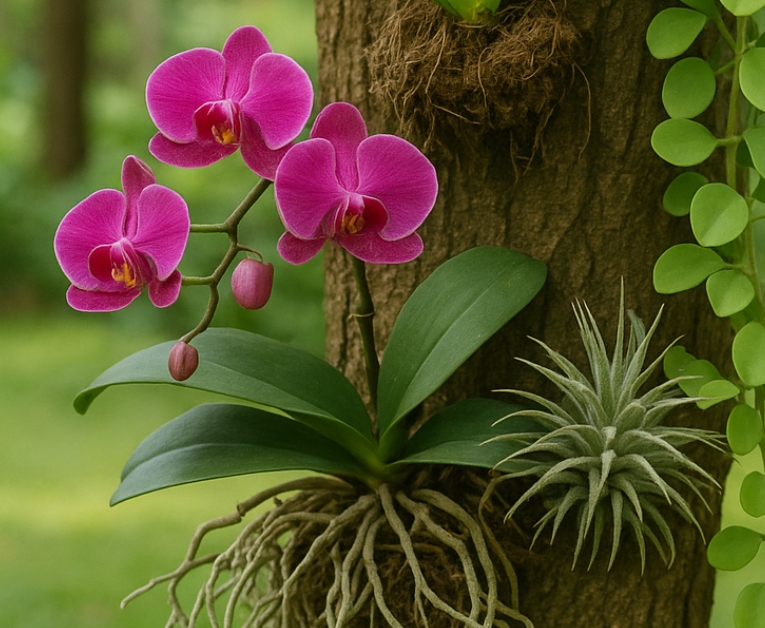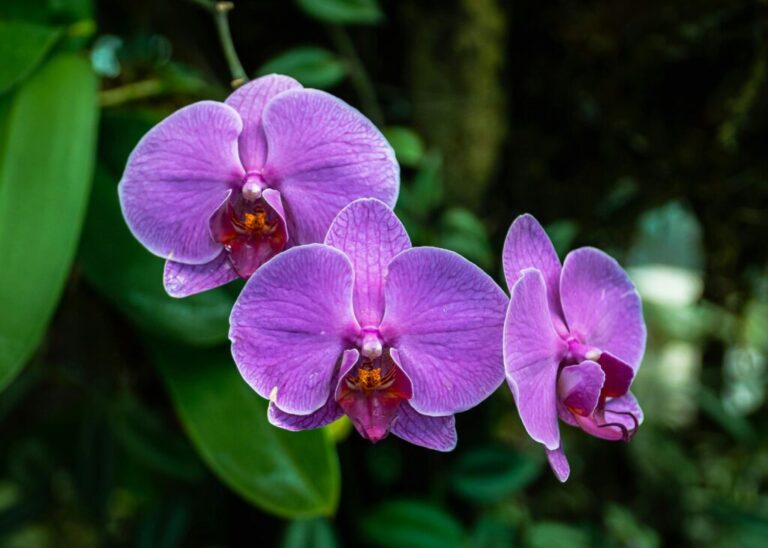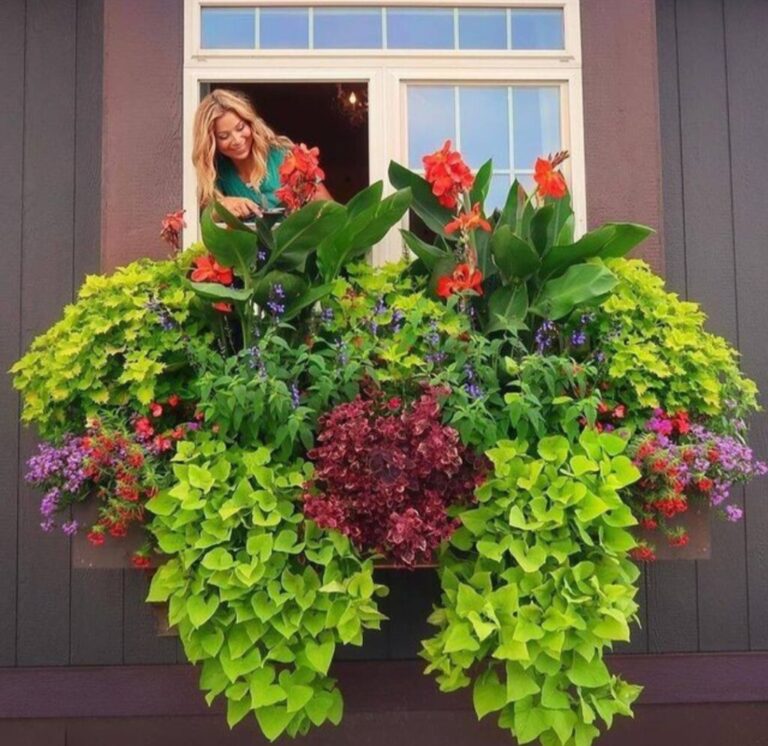Summer Blossom Secrets:Your Guide to 4 Easy Ways to Keep Hanging Baskets in Full Bloom.
Hanging baskets overflowing with vibrant flowers are a quintessential sight of summer. However, maintaining those lush blooms throughout the season requires a bit of know-how. In this guide, we’ll uncover four simple yet effective secrets to ensure your hanging basket flowers stay vibrant and beautiful all summer.
Creating stunning hanging baskets that thrive throughout the summer doesn’t have to be complicated. By following these four simple secrets—choosing the right plants, using the proper soil and container, mastering the watering routine, and staying on top of feeding and deadheading—you’ll be well on your way to enjoying long-lasting, vibrant hanging basket flowers that bring beauty and colour to your outdoor space all season long. So, roll up your sleeves, put on your gardening gloves, and let your summer blooms flourish!
Choose the Right Plants:
Choosing the right plants for your hanging baskets is a crucial step in ensuring their long-lasting beauty. Here are some tips to help you make the best plant selection:
Consider Light Conditions: Assess the amount of sunlight your hanging basket location receives.While some plants prefer full or even complete shade, others do best in direct sunlight. Make sure to choose plants that match the light conditions of your chosen spot.
Select hardy varieties: Opt for flowers known for their resilience and ability to withstand various weather conditions. Look for varieties that are labelled as “heat-tolerant,” “drought-resistant,” or “low-maintenance.” This will ensure your plants can endure the challenges of the summer season.
Mix Different Plant Types: Create a visually appealing display by combining different plant types that complement each other. Consider including a mix of trailing, upright, and filler plants. Trailing plants like petunias and ivy can spill over the sides of the basket, while upright plants like geraniums add height and structure.
Check Plant Tags: When purchasing plants, check the information on the plant tags or labels. These tags typically provide valuable information about the plant’s care requirements, growth habits, and expected bloom time. Look for plants that match your preferences and the conditions of your hanging space.
Consider Colour Palette: Choose a colour palette that resonates with your personal style and the overall aesthetics of your outdoor space. You can opt for a monochromatic look with varying shades of one colour or create a vibrant mix of complementary colours.
Research local recommendations: Consult your local garden centre or nursery for recommendations on plants that thrive in your specific climate and region. Local experts can provide valuable insights into which plants are best suited for your area.
Popular Hanging Basket Plants: Some popular plants for hanging baskets include:
Petunias: Available in various colours, these trailing plants are renowned for their profuse blooms.
Geraniums: Upright geraniums offer vibrant flowers and a range of leaf shapes.
Fuchsias: Known for their unique, pendulous flowers, fuchsias are ideal for adding a touch of elegance.
Verbena: These cascading plants produce clusters of small flowers in shades of purple, pink, and white.
Lobelia: Delicate blue, white, or purple flowers make lobelia an excellent filler plant.
Bacopa: With small, white or blue flowers, bacopa is perfect for adding a delicate touch.
Remember that proper care and maintenance play a significant role in the success of your hanging baskets. Regardless of the plants you choose, be sure to follow watering, feeding, and deadheading practises to keep your hanging baskets looking lush and vibrant all summer long.

Select the right soil and container:
Selecting the appropriate soil and container for your hanging baskets is essential for creating an environment where your plants can thrive. Here’s what you need to know:
Soil: Choosing the right potting mix is crucial as it provides essential nutrients, proper drainage, and adequate moisture retention. Look for a high-quality commercial potting mix formulated specifically for containers. These mixes are typically designed to be lightweight and well-draining, promoting healthy root growth and preventing waterlogged conditions.
Key features to consider in a potting mix:
Drainage: Ensure the mix has good drainage properties to prevent water from accumulating at the bottom of the basket and causing root rot.
Moisture Retention: While drainage is vital, the mix should also retain some moisture to keep the plants hydrated between waterings.
Nutrient Content: Opt for a mix that includes slow-release fertilisers to provide nutrients to your plants over time.
Container: Choosing the right container is equally important. Hanging baskets come in various materials, sizes, and styles. When choosing a container, keep the following things in mind:
Material: Hanging baskets are commonly made of plastic, wire, or natural materials like woven baskets. Each material has its advantages. Plastic is lightweight and retains moisture well. Wire baskets provide good airflow to the roots, while natural materials offer a rustic aesthetic.
Size: Ensure the basket is appropriately sized for the number and types of plants you intend to grow. A larger basket allows for better root development and more space for a mix of plant varieties.
Drainage: Look for containers with adequate drainage holes to prevent water from accumulating at the bottom of the basket.
Shape and Design: Consider the shape and design of the container. Some baskets are designed with flat backs to hang flush against walls, while others have rounded shapes for 360-degree viewing.
Lining: If your basket has wide gaps between the wires or slats, consider adding a liner to hold the potting mix and prevent it from falling out.
Liners: If your hanging basket has large gaps or openings, using a liner can help retain the potting mix and create a neater appearance. Liners are available in various materials, such as coconut coir, sphagnum moss, or even synthetic options. Choose a liner that matches your aesthetic preferences and provides adequate support for the potting mix.
Proper Installation: When planting, ensure you fill the basket with the potting mix to a level that allows adequate space for the plants’ roots. As you add plants, position them according to their growth habits—trailing plants at the edges and taller plants in the centre. Be mindful not to overcrowd the basket, as this can hinder proper airflow and growth.
By selecting the right soil, container, and any necessary liners, you’ll create an optimal environment for your hanging basket plants. This foundation, combined with proper care practises, will contribute to the long-lasting health and beauty of your summer blooms.
Master the watering routine.
Mastering the watering routine is a critical aspect of maintaining healthy and vibrant hanging basket flowers throughout the summer. Here’s how to ensure you’re providing your plants with the right amount of water:
Consistency is Key: Establish a regular watering schedule to provide a consistent level of moisture to your hanging basket plants. Irregular watering can stress the plants and lead to uneven growth and blooming.
Monitor Soil Moisture:To determine when your hanging basket needs watering, check the soil moisture frequently. Enter the earth with your finger about 1 inch deep. It’s time to hydrate if it feels dry down below. Hold off on watering a little longer if it still seems damp.
Water Thoroughly: When you water, aim to thoroughly wet the entire root ball. Water the basket until you see water draining out from the bottom. This ensures that the roots are getting sufficient moisture, and it also helps flush out excess salts that can accumulate in the soil.
Avoid overwatering: While it’s important to keep the soil consistently moist, be cautious not to overwater. Overwatering may result in moisture-related problems such as root rot . Always allow the top inch of the soil to dry out between waterings.
Adjust for Weather Conditions: The watering needs of your hanging basket may vary based on weather conditions. On hot and windy days, plants may require more frequent watering. Conversely, during cooler and rainier periods, you might need to water less frequently.
Early Morning Watering: Water your hanging baskets early in the morning when the temperature is cooler and the sun is not as intense. This allows the plants to absorb moisture before the heat of the day causes rapid evaporation.
Use the Right Technique: When watering, aim to direct the water to the base of the plants rather than wetting the foliage. Wet leaves can lead to fungal diseases and sunburn. A gentle stream or a watering wand with a soft flow can help you target the root zone.
Observe Plant Responses: Pay attention to how your plants respond to your watering routine. If you notice wilting during the heat of the day, it may be a sign that your plants need more water. However, if the wilting persists into the evening, it might indicate overwatering or other issues.
Adjust as Needed: Be flexible with your watering routine. As your plants grow and the weather changes, their water requirements may shift. Adjust your watering frequency accordingly.
Remember that while it’s important to water consistently, it’s equally crucial not to inundate your plants. A balanced approach to watering, coupled with proper soil and drainage, will contribute to the health and vitality of your hanging basket flowers all summer.
Feeding and deadheading:
Feeding and deadheading are essential practises to ensure your hanging basket flowers stay healthy, vibrant, and blooming throughout the summer. Let’s dive into these two important aspects:
Feeding:
Choose the Right Fertiliser: Select a balanced, water-soluble fertiliser that contains essential nutrients like nitrogen, phosphorus, and potassium. Look for fertilisers formulated for flowering plants or hanging baskets. Slow-release fertilisers mixed into the potting soil at planting time can also provide consistent nutrients over several weeks.
Follow a Feeding Schedule: Establish a regular feeding schedule to provide your plants with the nutrients they need. Depending on the fertiliser you’re using, feed your hanging basket flowers every two to three weeks during the growing season. Always follow the product’s instructions for application rates.
Apply correctly: Dissolve the fertiliser in water according to the package directions. Water your hanging basket thoroughly with the fertiliser solution, ensuring even coverage. Avoid getting fertiliser on the leaves, as it can lead to burning or scorching.
Deadheading:
Promote Continued Blooming: Deadheading involves removing spent flowers from your plants. Doing so prevents the plant from using energy to produce seeds and encourages it to continue producing new blooms. This practise extends the flowering period and keeps your hanging basket looking fresh.
Regular deadheading: Check your hanging basket regularly for faded or wilted flowers. Pinch or snip off the dead blooms just above a set of healthy leaves or nodes. You can use your fingers or a pair of pruning shears. Be sure to remove the entire flower head, including the seedpod or developing seed.
Timing is important: Deadhead your plants as soon as you notice fading blooms. Removing spent flowers promptly prevents them from producing seeds and redirects the plant’s energy into creating new flower buds.
Encourage Airflow: In addition to promoting new growth, deadheading also improves airflow around the plants, reducing the risk of fungal diseases.
Pay Attention to Different Plants: Different plant varieties may have varying deadheading requirements. Some plants, like petunias and geraniums, benefit greatly from regular deadheading, while others may not require it as frequently.
Dispose of Debris: Collect the removed flowers and any plant debris to keep your hanging basket tidy and minimise the risk of disease.
Remember: While feeding and deadheading are beneficial practises, avoid over-fertilising or removing too many flowers at once. Striking a balance between maintaining the plant’s health and aesthetics is key. By following these practises, you’ll help your hanging basket flowers flourish and ensure a spectacular display of colour throughout the summer season.
FAQ
How do you keep hanging baskets full all summer?
Regular watering, proper fertilization, and selecting plants that suit your climate will help keep hanging baskets full all summer.
Why is my hanging basket not flowering?
Factors like insufficient light, incorrect fertilization, or overwatering might prevent your hanging basket from flowering.
How do I make my hanging baskets look full?
Opt for a mix of trailing, filler, and thriller plants, and consider using a high-quality potting mix to achieve a full look in your hanging baskets.
How long do summer hanging baskets last?
Summer hanging baskets typically last until the first frost or when plants start to decline, usually around 4-6 months. Regular maintenance can extend their lifespan.

